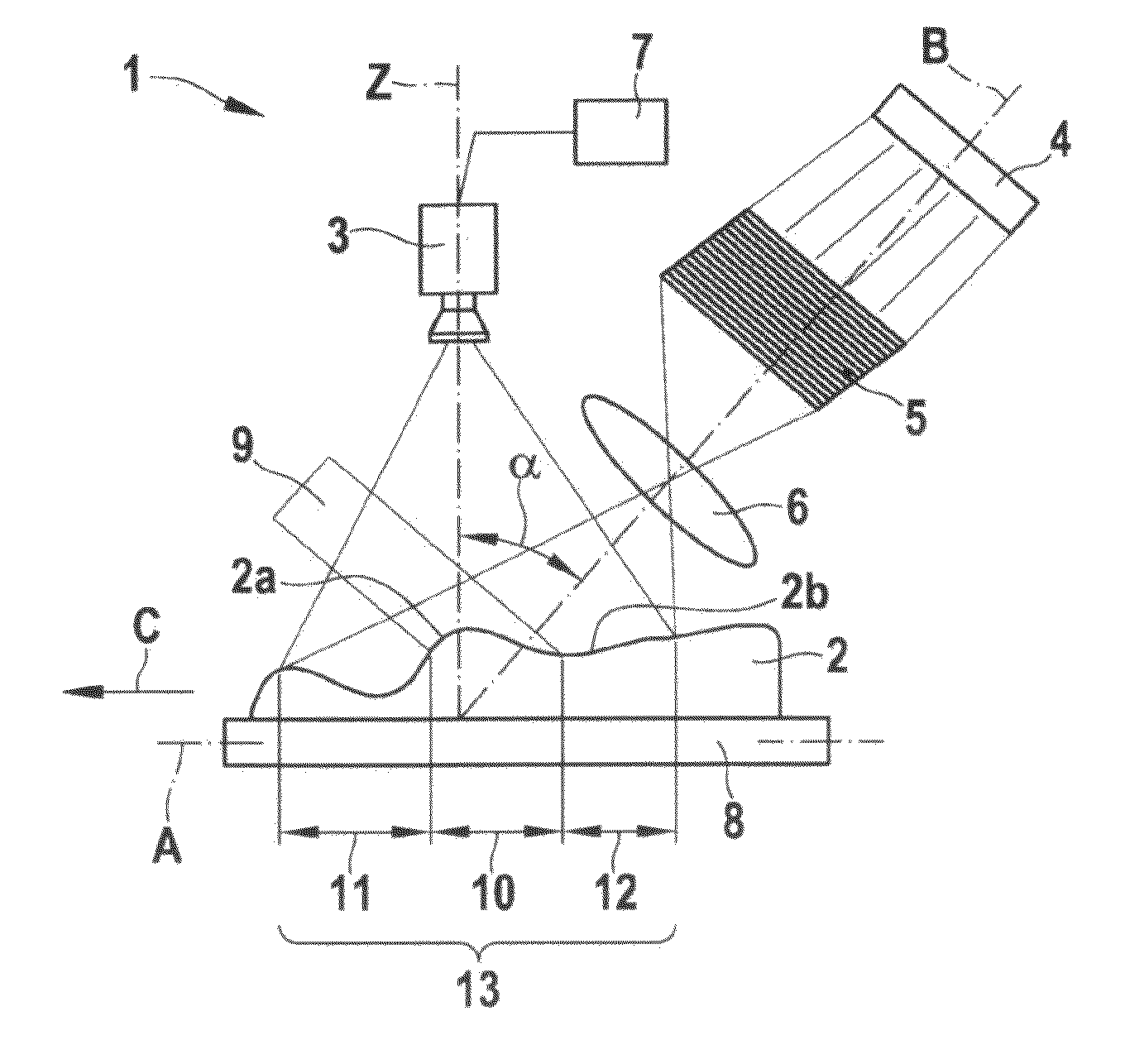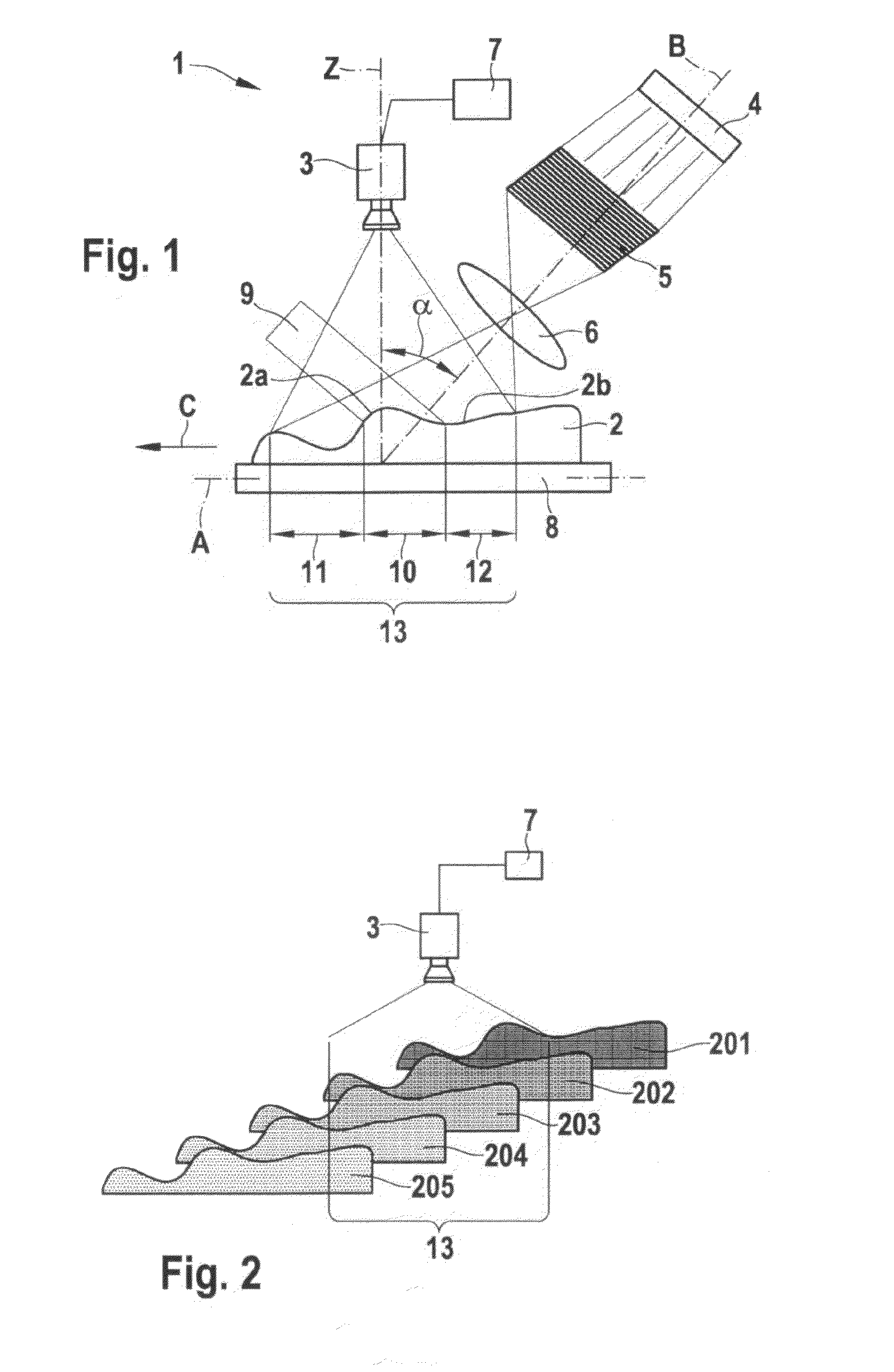Device and method for obtaining a three-dimensional topography
- Summary
- Abstract
- Description
- Claims
- Application Information
AI Technical Summary
Benefits of technology
Problems solved by technology
Method used
Image
Examples
Embodiment Construction
[0017]A device 1 and a method for obtaining a three-dimensional topography of a measured object 2 are described in greater detail below with reference to FIGS. 1 and 2.
[0018]As is apparent in FIG. 1, device 1 for obtaining a three-dimensional topography of a measured object 2 includes a 2D camera 3, an illumination system having a light source 4, a grid 5, and a lens 6; a computing unit 7, and a movement device 8. Measured object 2 is situated on movement device 8. Movement device 8 is able to move in the direction of an axis A, for example to the left in FIG. 1. As is apparent in FIG. 1, a center axis B of the illumination system is situated at an angle α of approximately 45° with respect to a recording direction Z of 2D camera 3. This configuration of the illumination system at an angle α with respect to recording direction Z results in a focal plane 9, which is schematically indicated in FIG. 1. This results in a focused area 10 as well as a first unfocused area 11 and a second u...
PUM
 Login to View More
Login to View More Abstract
Description
Claims
Application Information
 Login to View More
Login to View More - R&D
- Intellectual Property
- Life Sciences
- Materials
- Tech Scout
- Unparalleled Data Quality
- Higher Quality Content
- 60% Fewer Hallucinations
Browse by: Latest US Patents, China's latest patents, Technical Efficacy Thesaurus, Application Domain, Technology Topic, Popular Technical Reports.
© 2025 PatSnap. All rights reserved.Legal|Privacy policy|Modern Slavery Act Transparency Statement|Sitemap|About US| Contact US: help@patsnap.com


